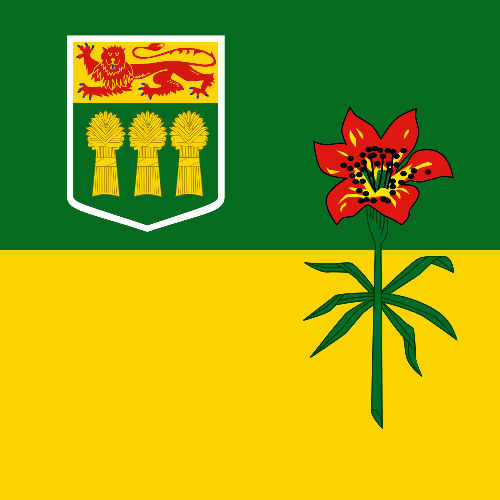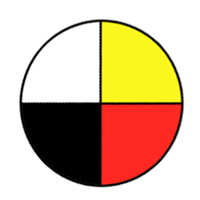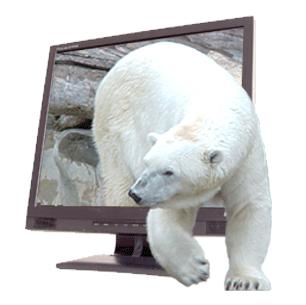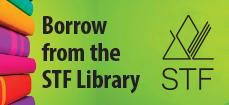R050666
Cheyenne's pépère teaches her to plant a tree every year to honour Mother Nature and to respect the circle of life. At first, Cheyenne is sad when Pépère passes away, but Cheyenne realizes that Pépère's teachings will live long after he no longer walks the earth.
This book highlights the importance of looking ahead to and planning for what we leave our grandchildren and the generations to follow.
Record posted/updated:
July 8, 2024
R101122
The Agriculture in the Classroom website offers a wide variety of resources related to agriculture and the environment for teachers and students from Kindergarten to grade 12. Resources can be filtered by type (activity, book, kit, lesson plan, unit plan, poster, map, video, etc.), by subject (arts, career exploration, language arts, health, math, practical and applied arts, science and social studies), by grade, by province and by topic.
Record posted/updated:
December 6, 2022
R104955
The Agriculture in the Classroom Saskatchewan website offers a wide variety of resources related to agriculture and the environment for teachers and students from Kindergarten to grade 12. Resources can be filtered by type (activity, book, kit, lesson plan, unit plan, poster, map, video, etc.), by subject (arts, career exploration, language arts, health, math, practical and applied arts, science and social studies), by grade, by province and by topic. Some of the featured resources include Kareero, a tool that helps students explore careers in agriculture, The Food Security Budget Game, which helps students learn about local and global food security, and the Foundations of Saskatchewan Agriculture series, which helps students explore the various agricultural products of Saskatchewan.
Record posted/updated:
December 6, 2022
R049557
Aston introduces over 60 different types of eggs to young children. She describes why some eggs are shaped a certain way, why some eggs use camouflage and why some eggs are textured. She includes three life cycles of animals that start as an egg.
Record posted/updated:
December 6, 2018
R051396
A kind-hearted bear is so filled with love and joy that he always hugs everything in sight. One day, however, he is tempted to be violent when he crosses paths with a human who is about to cut down a beautiful old tree. After pausing to reflect, the bear is able to resolve the situation in a non-violent fashion. Simple, cartoon-style illustrations pair with easy-to-read text in this endearing story.
Record posted/updated:
August 16, 2020
R050235
Bradley McGogg lives in the bog in a hollowed-out log. The bog is filled with good things to eat. One day Bradley goes to his pantry and finds that the cupboards are bare. He decides to meet his new neighbours in hopes of getting something to eat. As Bradley meets his neighbours, he decides that their food choices are disgusting. Returning to the bog, his home is filled with all kinds of delicious bugs.
Record posted/updated:
November 28, 2018
R051727
In this animated adaptation of the picture book by Bob Barner, many bugs come to life through verse, collage images, and rap-style music. We see spiders, grasshoppers, bees, ants, and beetles and learn the stages of the life cycle of a butterfly.
Record posted/updated:
July 2, 2020
R034860
Each book in the series discusses on season. Children can observe the coming of the season and its effects on the weather, animals and plants. At the end of each book are suggestions for seasonal activities to enjoy. Each book is illustrated with paper-cut visuals.
Please see the related resources below.
Record posted/updated:
October 13, 2019
R046966
Using diary format, the life cycle of a fly is introduced. The author discusses learning to fly, landing on targets, using his senses and the important part that flies have in the food chain. Children should enjoy the humour throughout the story, such as Fly being sent to the garage for a time-out.
Record posted/updated:
December 6, 2018
R051296
Using diary format, the life cycle of a fly is introduced. The author describes learning to fly, landing on targets, using their senses and that flies are an important part of the food chain. Children should enjoy the humour throughout the story, such as Fly being sent to the garage for a time-out. The video is adapted from the book by Doreen Cronin, illustrated by Harry Bliss and narrated by young actress, Abigail Breslin.
Record posted/updated:
July 22, 2020
R037438
Using a diary format, the life cycle of a worm is introduced. Through the use of humour, children learn about worms and the role they plan in taking care of the Earth. Students may be able to identify with the worm's experiences as he forgets his lunch, teases his sister and tracks mud into his house.
Record posted/updated:
December 6, 2018
R103008
This series allows students to explore elements of weather. Each two-page spread opens with a question. On the right-hand page is a flap that when opened, reveals the science behind the element. For example, students will discover why rain falls, what raindrops look like and why the air smells different after a rain.
Please see the related resources below.
Record posted/updated:
November 28, 2018
R101152
Fall brings about thoughts of "back to school", Halloween, changing colors, and harvesting in rural areas. Out host Maggie examines school bus safety, schoolyard safety, trick-or-treating safety, and farm safety.
Record posted/updated:
January 3, 2019
R051293
In this video, children will learn the life cycle of plants and animals. For example, children will learn that a tadpole comes before a frog, a seed comes before the flower, the caterpillar comes before the butterfly and the egg comes before the chicken. The original picture book was written and illustrated by Laura Vaccaro Seeger and this adaptation on video is narrated by young actress, Elle Fanning.
Record posted/updated:
July 22, 2020
R047244
With beautiful die cuts, this imaginative book shows such transformations as a tadpole becoming a frog, a caterpillar becoming a butterfly, a seed becoming a flower, words becoming a story and paint becoming a picture.
Record posted/updated:
December 6, 2018
R051295
Fletcher the fox has a favourite tree, which is loosing its leaves now that fall has arrived. He worries about his tree and thinks there is something wrong with it. Winter arrives and a new surprise awaits Fletcher as the tree undergoes another transformation. This is a video version of the storybook written by Julia Rawlinson, with pictures by Tiphanie Beeke.
Record posted/updated:
August 16, 2020
R054006
Fletcher loves everything about springtime. As Fletcher celebrates spring in the orchard, he sees "snow" on the ground. He tells the birds to fly back south and the rest of the animals that spring has not yet arrived. In the orchard, the bunnies see the "snow" and let all the animals in on the secret of the snow. This video is an adaptation of the picture book written by Julia Rawlinson and illustrated by Tiphanie Beeke.
Record posted/updated:
August 16, 2020
R025282
This new edition contains easy-to-follow lesson plans that incorporate an inquiry-based approach to learning. The student-centred activities also include ideas for integrating Indigenous knowledge, multicultural connections and real-world applications into each lesson. The four units contained in the resource are: Characteristics and Needs of Living Things, The Senses, Characteristics of Objects and Materials and Daily and Seasonal Changes.
Record posted/updated:
November 28, 2018
R054801
When Buzz enters Fly Guy in The Amazing Pet Show, the judges aren't impressed. Flies are pests and can't be pets, but Fly Guy is determined to amaze everyone with his tricks. After all, how many pets can say their master's name and know their own jar? Fly Guy wins the Smartest Pet Award, and a beautiful friendship between Buzz and Fly Guy begins.
This video's controlled vocabulary, simple sentence structures, and chapter segments make it an ideal choice for emergent readers. Youngsters will be drawn to the cartoon-like animations and quirky story, which offers possibilities for sequencing, predicting, and character analysis. Thematically, this tale could be used for discussions about exotic pets, unusual friendships, families, and overcoming obstacles. From a science perspective, opportunities abound for the study of flies and other insects, particularly those considered pests. Buzz, who is outfitted with a butterfly net, hard hat, and insect jar, will introduce students to the naturalist's world.
Record posted/updated:
July 8, 2024
R022588
In this wordless picture book, readers observe the changes in a neighbourhood from before Tracy is born until she is an adult. At first, the neighbourhood is decaying. As the book progresses, the neighbourhood is renewed through the efficacy and social responsibility of people within the community.
The book won the 2005 Notable Children's Book Award for the Association for Library Service to Children.
Record posted/updated:
July 8, 2024
R050223
The roles of male and female geese that are starting a family are described. The female builds the nest, lays the eggs and keeps the goslings warm until they hatch. The male helps to protect the nest by chasing away predators.
At the back of the book is additional information on the Canada goose, migrating and resident geese and a suggestion for a budding scientist.
Record posted/updated:
July 8, 2024
R043774
The Inuit have watched and learned from the polar bear for generations. Davies describes the adaptations the polar bear has undergone to survive in the Arctic. The polar bear is able to swim and walk for hundreds of kilometres in search of food. At the same time, the polar bear is gentle with her newborn cubs. She will protect and feed the cubs for two years before they are able to hunt on their own. Through observing the polar bear, the Inuit have learned to hide from blizzards in a house of snow, to hunt for seals and to survive in the Arctic.
Record posted/updated:
November 28, 2018
R047038
Children discover the animals that live in their backyards throughout the year. The wren is often the first sign that spring has arrived. Toads, snails and snakes can be found in the backyard. Other animals featured in the book include a hummingbird, wasps and spiderlings, bats and possums.
Each two-page spread is illustrated with paper-sculpture art. One page is done in colour and the corresponding page is in white. Each illustration provides a clue to the next animal on the following page.
The book includes a legend that contains brief information about each animal in the book.
Record posted/updated:
July 8, 2024
R055491
The authors provide suggestions to integrate science with mathematics and literacy. They encourage teachers to develop reliable processes for assessing both their teaching practice and student learning. Included in the book are over 20 performance assessments to promote student engagement. The assessment models inquiry-based science to allow learners to demonstrate their understanding of concepts through exploration, inquiry and application.
The book includes a table of contents, an appendix, a reference, a bibliography and an index.
Record posted/updated:
July 8, 2024
R052223
This handbook will assist educators to incorporate writing into their science teaching. Examples of the various types of writing are included. The main focus of the handbook is the "conceptual change model" of learning. Saigeon provides strategies to use this model in the classroom.
The handbook includes samples of student work and a table of contents.
Record posted/updated:
July 8, 2024
Record posted/updated:
February 4, 2021
R105353
Join us for a co-learning opportunity where you’ll discover a unique way to teach digital literacy. During this session, a Let’s Talk Science education specialist will take you and your class through a 45-minute adventure where students will bust some moves and flex those brain muscles.
Record posted/updated:
May 29, 2025
R105347
During this two-part experience, you’ll discover how to easily implement climate education into the classroom while seeing how outer space can engage students. At the same time, students will: Develop their observation and prediction skills as they prepare to complete a seed investigation inquiry. Investigate collaborative learning and comparing/contrasting skills as they explore the relationship between plants and climate.
Record posted/updated:
May 29, 2025
R105340
During this two-part experience, you’ll discover how to easily implement climate education into the classroom while seeing how outer space can engage students. At the same time, students will: Develop their observation and prediction skills as they prepare to complete a seed investigation inquiry. Investigate collaborative learning and comparing/contrasting skills as they explore the relationship between plants and climate.
Record posted/updated:
May 29, 2025
R105372
Join us in reading “Living in a Warming World,” which examines how animals adapt to our changing planet. Following the story, learners will participate in guided interactive activities around climate change and gain insight into its impact on wildlife.
Record posted/updated:
May 29, 2025
R105366
In this Broadcast, students explore weather through weather stations, focusing on predictions, observations, and data collection. Through discussions and observations, they'll deepen their understanding of meteorology and its impact on daily life. This broadcast session will span a duration of 45 minutes, ensuring a comprehensive learning experience for all participants.
Record posted/updated:
May 29, 2025
R105362
In this 2-part broadcast series, students will actively participate in activities aimed at nurturing their computational thinking skills. These activities are designed to facilitate the development of decomposition, abstraction, logic and algorithmic thinking. Each broadcast session will span a duration of 45 minutes, ensuring a comprehensive learning experience for all participants.
Record posted/updated:
May 29, 2025
R105360
In this 2-part broadcast series, students will actively participate in activities aimed at nurturing their computational thinking skills. These activities are designed to facilitate the development of decomposition, abstraction, pattern recognition, and the art of methodical testing and evaluation. Each broadcast session will span a duration of 45 minutes, ensuring a comprehensive learning experience for all participants.
Record posted/updated:
May 29, 2025
R053287
This series allows students to observe their natural environment. Each book examines a habitat. Within the habitat are animals, plants and objects. The book allows students to look closely at one part of each object, animal or plant and observe what they see. Students flip over a page to see the whole object, animal or plant with a detailed description.
Please see the related resources below.
Record posted/updated:
October 12, 2019
R101636
This picture book presents two children enjoying seasonal activities throughout the year. There are four dedicated pages for each season. At the end of the book, the four seasons are represented in a circle along with drawings of animals in each season.
Record posted/updated:
January 7, 2022
R013535
Why were bison essential to people living on the plains, prior to the time of Treaty negotiations (1870s)? What does the bison represent today? This LIVE Arts broadcast features contemporary artwork and storytelling by Métis artist Leah Marie Dorion, based on her children's book, "Métis Camp Circle: A Bison Culture Way of Life." Leah reads from the book, discusses the importance of bison (past and present), explains the use of Métis symbolism and discuss the composition and design of the illustrations. Leah guides students through a live drawing activity where they learn to draw and paint a bison as inspired by Leah's particular style of creating and imagery.
Record posted/updated:
April 21, 2021
R053288
This series of modular kits allows students to build skills to ensure a complete understanding of the nature of science. The process skills and the nature of science work together to help students think and act like scientists. In kindergarten, students will develop their process skill of observation. Through the nature of science, kindergarten students will learn that science knowledge is based on evidence and that science knowledge can change based upon new evidence.
Numerous opportunities are provided for students to engage in hands-on explorations that ensure a thorough understanding of key science concepts. Each unit opens with a Big Question to guide learning. Throughout the unit, there are four levels of inquiry. The Explore Activity allows students to build background knowledge. Teachers direct instruction in Directed Inquiry. In Guided Inquiry, students become independent learners with guidance from the teacher. Students choose their own questions, create and carry out plans, collect and record data and share data in Open Inquiry.
Additional materials for students and teachers are available online at www.myngconnect.com/login/chooseMainUI.spr
Please see the related resources below.
•
•
•
•
•
•
•
•
•
•
•
•
•
•
•
•
•
•
•
•
•
•
•
•
•
•
•
•
•
•
•
•
Record posted/updated:
January 25, 2019
R053581
This video examines the needs of all living things. The program opens with the basic characteristics common to living things. Needs of living things such as living space, food, water, air and proper temperature are introduced.
A teacher's guide is available.
Record posted/updated:
July 8, 2024
R046016
A group of Elders are berry picking and Antoinette becomes separated from the group. As Antoinette picks berries, she sees four animals and tells a narrative about each animal. There is a brief introduction where Coleclough introduces the importance of Elders, storytelling and Nanabozho, who is a spirit in human form.
Teachers may consider inviting an Elder or traditional knowledge keeper into the classroom to tell the narratives.
Record posted/updated:
July 8, 2024
R037470
This picture book is written in Cree using standard roman orthography and syllabics as well as English. It tells the story of grandmother, mother and daughter who walk to the field, pray and gather yarrow. At the end of the book is a recipe for yarrow tea. This book offers a way to discuss cultural traditions.
Record posted/updated:
January 7, 2022
R048515
Told in Cree and English, the story explores the relationship between a young boy and his grandmother (Kôhkum). The two prepare to take a walk in the woods to pick rosehips. The young boy follows his grandmother as she walks, listens, picks, prays and eats. By mimicking her actions, the young boy is learning the cultural traditions and values of his Cree heritage. Included at the back of the book is a recipe to make rosehip tea.
Teachers may consider bringing an Elder into the classroom to discuss our relationships to the land.
This book was selected as a finalist for the 2009 Canadian Children's Book Centre - Best Books for Kids and Teens.
Record posted/updated:
July 8, 2024
R033622
Araba, a Ghanian child, asks her pen pal, Lou, "What is snow?" Lou tries to describe snow using his senses. What is it like when you feel, touch or taste snow? Lou tells Araba that in order to know snow, you must feel it in your hands. Lou tells Araba how they make angels in the snow. He tells Araba that on Christmas day, he will go outside to make a snow angel and he suggests that she can make an angel in the sand.
Record posted/updated:
November 28, 2018
R071130
Karas describes Earth and its cycles. He invites young children to travel on the spaceship Earth as the concepts of rotation and revolution are introduced. The Earth is in constant motion as it spins, circles, glides and tilts. Throughout the book, relevant terminology is introduced.
Record posted/updated:
August 16, 2020
R046802
Caroline and her family move to Meadowview Street, but they soon discover that there is no meadow, no view and nothing growing in their yard except grass. While Dad is mowing the lawn, Caroline spots a blossom in the grass. She asks her dad not to mow in that one spot and makes a fence to protect the flower. Soon, Dad sells the lawnmower because Caroline's flower preserve has taken over the lawn. Caroline attracts various animal and plant species as her meadow continues to develop. Caroline's efforts to create a meadow catch on in the neighbourhood.
Record posted/updated:
December 6, 2018
R071140
Students use their observation skills as a young girl takes a walk to the beach. On her way to the beach, she passes through four habitats: the woods, the salt marsh, the dunes and the beach. There is a two-page spread that illustrates each habitat. Children open the flap to discover the animals and plants that live in the habitat. As a suggested activity, children are encouraged to find a place to sit, watch and listen to discover what lives in their natural surroundings.
Record posted/updated:
December 6, 2018
R071131
Oscar is a curious kitten and at the pond, he is full of questions about growing things. Frog helps answer some of Oscar's questions as he has gone through his own changes, from a tadpole to a frog. Through Frog, Oscar finds out how living things begin, what they eat and how they grow. Included in the book are summaries about growing and an index.
Record posted/updated:
December 6, 2018
R070598
This series introduces the physical sciences to young children. Each book introduces the topic, provides background information and then follows up with a hands-on activity. At the end of each book are suggestions for teachers to explore the concepts further with their students. Each book includes a glossary and an index.
Please see the related resources below.
Record posted/updated:
October 13, 2019
R054530
This collection of NSTA journal articles allows practising teachers to reflect upon what is already known in their science teaching. The contributors provide suggestions for new approaches to teach classroom science. The articles are organized into seven sections: nature of science and science inquiry, teaching science, science for all, science-teaching toolbox, teaching life and environmental science, teaching physical science and teaching Earth and space science.
The book includes a table of contents, appendices and an index.
Record posted/updated:
July 8, 2024
R071687
This safety resource brings information together that is needed by administrators, planners, teachers and support staff to help them make sound decisions regarding science safety. It supports planning and action by providing information on safety legislation, standards and concerns, as well as example procedures for eliminating or minimizing hazards. A copy of this handbook was sent to all schools with Grades 8-12. Because workplace standards may change over time, users of this resource should check for updated information wherever there are references to national or provincial legislation.
Record posted/updated:
January 2, 2019
R052037
Sandy loves to visit her grandpa's house by the beach where she and her dog, Pepper, play in the sand. One day, Sandy's walk to the beach is ruined because the sand is littered with garbage. Sandy wonders who would do this to a beautiful place. She then meets the Garbage Lady who keeps the beach clean by recycling materials that she has found. The Garbage Lady teaches Sandy that by recycling and reusing items, she is shrinking her footprint. At the back of the book are 12 suggestions for shrinking our footprints.
Record posted/updated:
August 16, 2020
R105334
This Broadcast has been tailored to complement Tomatosphere™, an out-of-this-world science experiment that investigates the effects of space on the germination of tomato seeds. During the broadcast, students will develop their observation and prediction skills as they prepare to complete a seed investigation inquiry. The session will last 45 minutes, providing a comprehensive learning experience for all participants. Educators who sign up for both Tomatosphere™ and LIVE STEM before February 26th will receive 3 packages of complimentary seeds prior to the live broadcast as part of their registration. Those who sign up after that time are eligible to receive the regular number of seeds packages that are distributed by the Tomatosphere™ program and they will likely arrive after the live broadcast. You are welcome to participate in LIVE STEM without Tomatosphere™ as any other seeds you have are suitable for the activities presented during the broadcast.
Record posted/updated:
May 29, 2025
R029301
Two young Ojibway sisters go out into the winter night to view the Northern Lights or "SkySpirits." As they walk through the snow to Coyote Hill, they suck on an icicle plucked from a branch, meet a rabbit and a deer and hear a coyote sing. At last, they arrive at Coyote Hill and the Northern Lights appear. The girls watch in silent awe and then they decide that the SkySpirits are really SkySisters. The artwork captures the feeling of the silence, the snow and the cold.
Record posted/updated:
November 28, 2018
R054531
On the West Coast of Canada, Solomon has developed a special relationship with a large maple tree in his yard. Through the tree, Solomon has learned many things about the life of insects, plants and animals. After a fierce storm topples the maple, Solomon's uncle leads him through the process of creating a mask, which brings to life all of the things that were special to Solomon. Students will appreciate Solomon, his family, the respect there is for the natural environment and how art is a part of the culture in this story.
Record posted/updated:
August 16, 2020
R054841
Spring is a time of melting ice, changing weather and spring cleaning. Viewers join our host Maggie as she discusses staying off lakes and ponds, storm and general weather safety, playground safety and spring cleaning safety.
Record posted/updated:
November 28, 2018
R101150
Ahhh summer! Sun, sand, water, but we must be careful as well. Our host Maggie talks about water and pool safety, boat safety, bicycle safety, sun protection, as well as the importance of hydration and what to do with bites, stings and poison ivy.
Record posted/updated:
January 3, 2019
R070580
Charlie likes to help his grandmother, who tells stories while they work. While being reminded to turn off the water tap, Grandma describes how everything around us is connected to water. Children will benefit from Grandma's wisdom as they learn to take care of Mother Earth.
Record posted/updated:
August 16, 2020
R049948
Students will enjoy following the journey of a plastic bottle. Starting as a blob of crude oil, the oil is cleaned and changed into forms that people can use to make things. As the material is passed through the manufacturing process, it is moulded into a plastic bottle, filled, and shipped to stores. When the bottle is recycled, it is transformed into a fleece coat.
Record posted/updated:
November 28, 2018
R053051
In this collection of narratives, readers will discover how various cultures celebrate our connection with nature and remind us how important it is to take care of Mother Earth. The narratives will increase understanding of the relationship to the land, celebrate the beauty of the natural world and share wisdom to take care of the Earth. The text includes a table of contents and a suggested activity to accompany each narrative.
Record posted/updated:
November 28, 2018
R049302
This unique book allows students to "feel" colours using their senses. Sighted students will understand what it is like to experience things through their sense of touch, taste, smell or hearing. The text provides an explanation of the colour while the corresponding page has the drawing. The raised blackline drawings on black paper allow students to touch a colour. Braille letters accompany the text so that the sighted reader can imagine what it is like to use Braille to read.
Record posted/updated:
November 28, 2018
R071587
Moko is a young and curious explorer who constantly questions everything that grabs his attention. Each episode describes an adventure where Moko is seeking an answer to his question. The episode ends with a short explanation to the question. In this video, Moko observes the shape of the moon as it goes through its phases.
Record posted/updated:
November 28, 2018
R054524
In this animated video, Liam lives in a city that is dark and grey. While exploring one day, Liam discovers a stairwell that leads to old railroad tracks. Among the tracks is a patch of dying wildflowers. Liam decides to take care of the garden. He learns to water and prune the plants. As the garden starts to spread, the city is transformed into a colourful and green world. This video is an adaptation of the picture book written and illustrated by Peter Brown.
A teacher's guide is available.
Record posted/updated:
July 8, 2024
R052781
This video introduces the seasons to children. Mother Earth presents each season using live-action and animated sequences. In addition to the seasons, children will observe daily changes and how the changes affect plants, animals and human life. The seasons played a role in First Nations societies. For example, during the winter months, storytelling provided the Anishinaabe opportunities to pass on cultural knowledge. Some concepts and terminology include dormant, adaptation, migrate and temperature.
A study guide is available.
Record posted/updated:
July 8, 2024
R071584
Moko is a young and curious explorer who constantly questions everything that grabs his attention. Each episode describes an adventure where Moko is seeking an answer to his question. The episode ends with a short explanation to the question. In this video, Moko learns to observe nature before a thunderstorm strikes.
Record posted/updated:
November 28, 2018
R071583
Moko is a young and curious explorer who constantly questions everything that grabs his attention. Each episode describes an adventure where Moko is seeking an answer to his question. The episode ends with a short explanation to the question. In this video, Moko wonders why the sun disappears during the day.
Record posted/updated:
November 28, 2018
R071585
Moko is a young and curious explorer who constantly questions everything that grabs his attention. Each episode describes an adventure where Moko is seeking an answer to his question. The episode ends with a short explanation to the question. In this video, Moko discovers that the rainy season allows vegetation to grow.
Record posted/updated:
November 28, 2018
R071581
Moko is a young and curious explorer who constantly questions everything that grabs his attention. Each episode describes an adventure where Moko is seeking an answer to his question. The episode ends with a short explanation to the question. In this video, Moko wonders where stars come from.
Record posted/updated:
November 28, 2018
R047600
A bushy gray squirrel is busy storing nuts for the winter. He does not notice that it is getting dark and cold. The squirrel has to find a bed for the night. The squirrel tries various spots, but finds other animals sleeping - a bear is in a den, bats are hanging upside down and there is a hole in a tree that is filled with baby raccoons. Finally, the squirrel finds the right spot for a bed.
Record posted/updated:
November 28, 2018
R051763
In this video program from Disney's Wild About Safety Series, Timon and Pumbaa ensure that the water, land and air around them are safe and clean. Students will explore the Three Rs (reduce, reuse and recycle). They will also learn to conserve water and energy.
Record posted/updated:
November 28, 2018
R105325
In this Broadcast, students will embark on a journey of computational thinking as they delve into the art of creating secret handshakes. Through the lenses of decomposition, abstraction, and algorithmic thinking, they will break down a variety of hand movements into simpler steps, abstract essential elements, and create algorithms to choreograph their unique handshakes. Get ready to unlock the secrets of communication through computational creativity! The session will last 45 minutes, providing a comprehensive learning experience for all participants.
Record posted/updated:
May 29, 2025
R072154
Children learn about the role and importance of small, local farms. Using the four seasons, children will understand the workings of the farm from plowing, planting, composting, mulching, harvesting, marketing fruits and vegetables and caring for the animals.
Children will realize that we depend upon the people who work together to grow and to share food for our sustenance, while protecting and respecting the land and animals.
Record posted/updated:
July 8, 2024
R047535
Velma is going into Grade 1 and her two sisters, Frieda and Fiona, were the perfect Grade 1 students. All the teachers remember the two sisters, but no one notices Velma. A trip to the butterfly conservatory changes this. A monarch butterfly roosts on Velma's finger and will not leave. Teachers and students will never forget Velma or her butterfly. The book discusses butterflies, from migration to metamorphosis.
Record posted/updated:
November 28, 2018
R052154
Water, air and heat from the sun work together to make weather. Students will learn about the seasons, climate, extreme weather and the future of weather. The book includes a table of contents, suggested activities and an index.
Record posted/updated:
November 28, 2018
R051288
This video examines the various things that animals can do with their ears, eyes, mouths, noses, feet and tails. Children will learn that not all animals use the body parts for the same purpose. For example, a lizard will break off its tail to escape predators and a skunk lifts his tail to spray his enemies. The original story book was written by Steve Jenkins and Robin Page.
Record posted/updated:
July 22, 2020
R101153
This program makes the point that winter can be fun if you follow some simple safety rules. The video host talks about the importance of: dressing properly, wearing proper protective equipment for outdoor sports, ice safety and playing away from roads and snowbanks.
Record posted/updated:
January 3, 2019
R054123
On a visit to his grandmother, a young boy is revolted by the "yucky" worms that are dug up in the garden. The boy changes his mind when he discovers how interesting worms can be and how they help the soil, plants and animals around the garden. This video is enhanced with appealing artwork and the witty remarks of the many worms who comment on all the action. A special segment titled, How To Be A Wormologist includes interesting garden experiments. This video is an adaptation of the picture book written by Vivian French and illustrated by Jessica Ahlberg.
Record posted/updated:
December 8, 2018


























































































































































































































































































